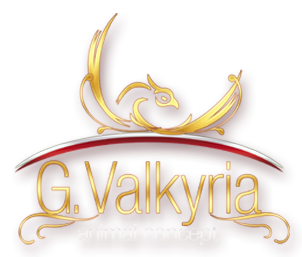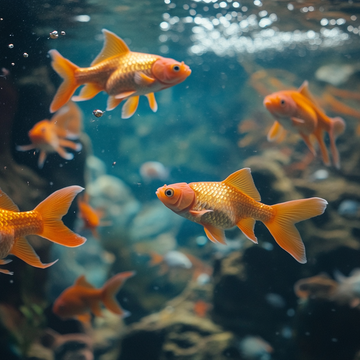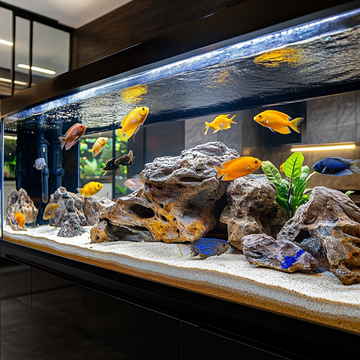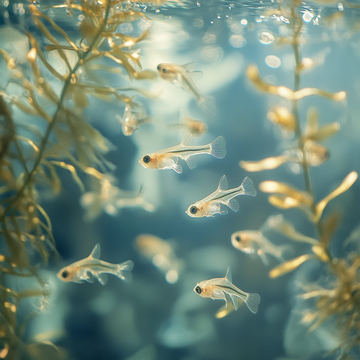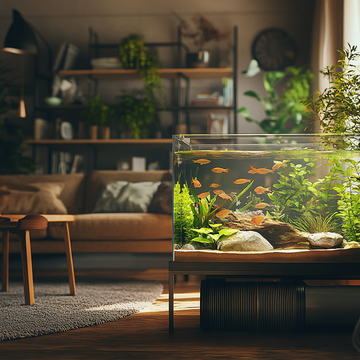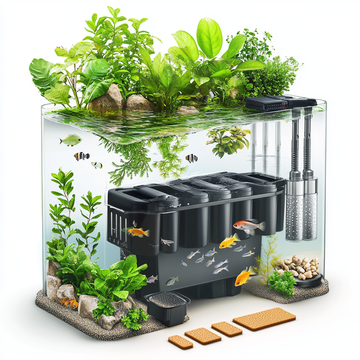Whether you're new to aquarium keeping or already an experienced fishkeeper, you've probably heard about the importance of keeping the water moving and properly cycled in your aquarium. But why is this aspect so crucial to the health of your fish and aquatic plants? In this article, we'll explore in depth the meaning of water circulation , aquarium cycling , and the various ways to oxygenate your tank to create a thriving, healthy environment.
What is the Nitrogen Cycle and Why is it Essential?
The nitrogen cycle is a fundamental biological process that occurs in all aquariums. This cycle is responsible for converting toxic waste produced by fish and other organisms into less harmful compounds. Here's how it works:
- Ammonia (NH3) : Fish waste and decomposition of organic matter produce ammonia, which is highly toxic.
- Nitrites (NO2-) : Nitrifying bacteria convert ammonia into nitrites, which are also toxic.
- Nitrates (NO3-) : Other bacteria convert nitrites to nitrates, which are less toxic and can be absorbed by plants or removed with water changes.
Keeping this cycle in balance is essential to prevent the buildup of toxic substances that can harm or even kill your fish.
The Importance of Water Movement
Water circulation in the aquarium has multiple benefits:
- Efficient Oxygenation : The movement of water increases the surface area in contact with the air, facilitating gas exchange and oxygenation of the water.
- Nutrient Distribution : Ensures that nutrients and heat are evenly distributed, benefiting all plants and animals in the tank.
- Preventing Dead Zones : Avoid stagnant areas where debris can accumulate and harmful bacteria can grow.
- Natural Habitat Simulation : Many fish come from current-filled environments and benefit from an environment that mimics their natural habitat.
Methods to Oxygenate and Keep Water Moving
There are several methods and devices you can use to ensure adequate oxygenation and circulation in your aquarium:
1. Air Pumps
Air pumps are devices that inject air into water through air stones or air-operated fittings.
-
Advantages :
- They increase gas exchange by creating bubbles that agitate the surface.
- Aesthetic , since bubbles can add an attractive visual effect.
- They operate accessories such as sponge filters, moving decorations and other air-powered items.
-
Considerations :
- Noise can be a factor; look for quiet pumps if the aquarium is in a quiet area.
- Make sure you have a non-return valve to prevent water from flowing backwards in the event of a power outage.
2. Internal and External Filters
Filters not only clean water of particles and debris, but also help in its circulation.
-
Advantages :
- Mechanical, chemical and biological filtration in a single device.
- They move the water , creating gentle currents that benefit the fish.
-
Considerations :
- Choose a filter appropriate to the size of your aquarium.
- Requires regular maintenance to operate efficiently.
3. Water Pumps and Powerheads
These pumps create stronger currents and are ideal for larger or specific aquariums.
-
Advantages :
- They mobilize large volumes of water .
- Ideal for marine or freshwater aquariums with species that enjoy currents , such as some cichlids.
-
Considerations :
- Make sure the current is not too strong for the species in your aquarium.
- Place them strategically to avoid dead zones.
4. Surface Oxygenators
Devices that move the surface of water to increase gas exchange.
-
Advantages :
- Efficient in oxygenating without creating strong currents.
- They reduce the formation of biofilm on the surface.
-
Considerations :
- They can be a good option for planted aquariums where you want to minimize water movement.
How to Cycle Your Aquarium Correctly
Before introducing fish, it is essential that your aquarium undergoes an initial cycling to establish the beneficial bacteria necessary for the nitrogen cycle.
Steps to Cycle your Aquarium:
- Set up your Aquarium : Add substrate, decorations and fill with treated water.
- Add a Source of Ammonia : This can be rotting fish food or commercial pure ammonia products.
-
Monitor Water Parameters :
- Ammonia : Should increase and then decrease.
- Nitrites : They appear after ammonia and will also decrease.
- Nitrates : Increase when bacteria convert nitrites.
- Wait Patiently : The process can take 4 to 6 weeks.
- Introduce Fish Gradually : Once the ammonia and nitrite levels are zero, you can begin adding fish little by little.
Tips:
- Do Not Change Water During Cycling : Unless ammonia levels are dangerously high.
- Use Biological Accelerators : Products containing beneficial bacteria can speed up the process.
- Feed Sparingly : If you have fish during cycling, feed sparingly to reduce waste production.
Continuous Maintenance of the Water Cycle and Movement
Maintaining the nitrogen cycle and water circulation does not end after the initial cycling.
Best Practices:
- Partial Water Changes : Perform 10-25% changes weekly or biweekly to remove accumulated nitrates.
- Filter Cleaning : Clean the filter media in the aquarium water to avoid killing beneficial bacteria.
- Regular Monitoring : Use test kits to check ammonia, nitrite, and nitrate levels.
- Do not overpopulate : Too many fish can unbalance the cycle and increase waste.
- Do Not Overfeed : Excess food increases ammonia production.
Special Cases: Planted and Marine Aquariums
Planted Aquariums
- Non-Excessive Oxygenation : Too much movement can expel the CO2 necessary for the plants.
- CO2 Diffusers : Use CO2 systems to promote plant growth.
- Adequate Lighting : Plants require light for photosynthesis and will contribute to oxygenation during the day.
Marine Aquariums
- Increased Circulation : Corals and other invertebrates require stronger currents.
- Protein Skimmers : Help remove organic waste and oxygenate the water.
- Salinity and Other Parameters : In addition to the nitrogen cycle, you should monitor salinity, calcium and other elements.
Keeping your water moving and properly cycled is the foundation for a healthy, vibrant aquarium. By understanding the nitrogen cycle and using the proper methods to oxygenate and move your water, you will create an environment where your fish and plants can thrive.
Don't underestimate the importance of these fundamental aspects! Take the time to establish and maintain these systems, and you will enjoy a beautiful and lively aquarium.
Share your experience!
Do you have any tips or stories about how you handle circulation and cycling in your aquarium? Share with us in the comments and let's help other enthusiasts create healthy and successful aquariums! 🐟🌿

